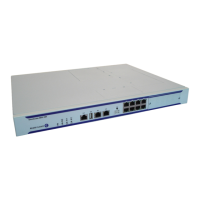Functional Components
Page 1232 7750 SR OS Services Guide
CCAG Bandwidth and Resiliency
A CCAG is an intermediate object between cross-connected objects (SAPs and network IP
interfaces) and the CCAs. A CCAG is similar to a Link Aggregation Group (LAG) of Ethernet
ports and uses the same underlying mechanisms to distribute conversations over multiple CCAs
and converge when a CCA becomes active or inactive in the group.
When a CCAG is created, the system allocates six Ethernet LAGs for the virtual ports on the
CCAs placed into the group. Each virtual port is placed into a respective LAG. For instance, each
time a CCA is placed into the CCAG, virtual port 1 on that CCA is placed into the first LAG
allocated to that CCAG. Virtual port 2 is placed into the second LAG on the CCAG. Virtual ports
3 through 6 are placed into their respective LAGs as well.
Using the set of LAGs provides a mechanism for conversation hashing or service mapping over all
member CCAs in the CCAG. In the unlikely event that a CCA fails or is removed from the CCAG,
the system will automatically modify the conversation hashing or service mapping on the CCAG
to represent the available active CCAs.
CCAG LAG Attributes
Unlike user provisioned LAG, the internal LAGs do not use a primary member to control the
typical port level configuration parameters. Instead, the parameters usually found at the port level
are implemented directly on the CCAG internal LAG representative objects (sap-sap, sap-net and
net-sap) for each path. These commands perform functions such as MTU definition and locally
administering the MAC address.
The default unique MAC addresses used each internal LAG within the CCAG are automatically
assigned from the chassis MAC pool. These MAC addresses are assigned from the pool based on
an offset relative to the CCAG-ID. The same set of default MAC addresses are assigned each time
a specific CCAG-ID is created.
Although a CCAG uses internal LAG mechanisms, the LACP protocol is not supported or
required. LAG resources used for CCAG purposes are not exposed to the user.
CCAG Traffic Distribution
A CCAG uses both direct object mapping and conversation hashing to distribute traffic over
multiple CCAs. To understand how each object type’s ingress traffic is distributed over the active
CCAs in a CCAG, refer to the LAG and ECMP Hashing section of the 7750 SR OS Interface
Configuration Guide.

